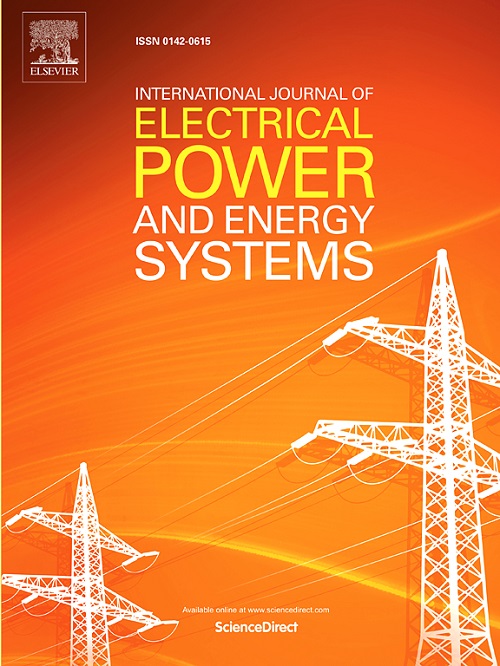Integrated energy microgrid bi-level game scheduling optimization taking into account electricity-heat-hydrogen enriched compressed natural gas coupling and shared energy storage
IF 5
2区 工程技术
Q1 ENGINEERING, ELECTRICAL & ELECTRONIC
International Journal of Electrical Power & Energy Systems
Pub Date : 2025-05-13
DOI:10.1016/j.ijepes.2025.110735
引用次数: 0
Abstract
Hydrogen-enriched compressed natural gas (HCNG) is a promising technology capable of significantly reducing carbon emissions in conventional gas units. Its integration into microgrids enhances the coupling and complementarity of diverse energy sources. Shared energy storage systems, which play a crucial role in improving energy utilization, have garnered increasing attention in recent research. However, the deployment of HCNG technology involves multiple stakeholders, posing challenges in balancing their respective benefits. To address this, we propose a novel scheduling method for Integrated Energy Management that accounts for electricity-heat-HCNG coupling and shared energy storage services. First, we model the proton exchange membrane electrolyzer and HCNG energy coupling device, incorporating HCNG loads on the demand side to enhance hydrogen production and utilization efficiency. Additionally, tiered carbon trading mechanisms, integrated demand response strategies, and shared energy storage are introduced to optimize carbon reduction on both the demand and storage sides while effectively constraining energy emissions. The strategic interactions between integrated energy microgrid operators and load aggregators are modeled using a Stackelberg game approach, and the existence and uniqueness of equilibrium solutions are rigorously proven. Finally, the proposed model is solved using the Black-winged Kite algorithm in conjunction with the CPLEX solver.Case studies demonstrate the effectiveness of the proposed method, showing revenue increases of 9.15% for integrated energy microgrid operators and 8.29% for load aggregators, alongside a reduction in carbon emissions by 8.76%.
考虑电-热-氢富压缩天然气耦合和共享储能的综合能源微网双层博弈调度优化
富氢压缩天然气(HCNG)是一项很有前途的技术,能够显著减少传统天然气装置的碳排放。它与微电网的整合增强了多种能源的耦合和互补。共享储能系统在提高能源利用率方面发挥着至关重要的作用,近年来受到越来越多的关注。然而,HCNG技术的部署涉及多个利益相关者,在平衡各自利益方面提出了挑战。为了解决这个问题,我们提出了一种新的综合能源管理调度方法,该方法考虑了电-热- hcng耦合和共享储能服务。首先,我们对质子交换膜电解槽和HCNG能量耦合装置进行建模,在需求侧加入HCNG负荷,以提高氢气的生产和利用效率。此外,引入分层碳交易机制、一体化需求响应策略和共享能源存储,以优化需求侧和存储侧的碳减排,同时有效约束能源排放。采用Stackelberg博弈方法对集成能源微电网运营商和负荷聚合器之间的策略交互进行建模,并严格证明了平衡解的存在唯一性。最后,利用黑翼风筝算法结合CPLEX求解器对模型进行求解。案例研究证明了所提出方法的有效性,表明综合能源微电网运营商的收入增加了9.15%,负载聚合商的收入增加了8.29%,同时碳排放减少了8.76%。
本文章由计算机程序翻译,如有差异,请以英文原文为准。
求助全文
约1分钟内获得全文
求助全文
来源期刊
CiteScore
12.10
自引率
17.30%
发文量
1022
审稿时长
51 days
期刊介绍:
The journal covers theoretical developments in electrical power and energy systems and their applications. The coverage embraces: generation and network planning; reliability; long and short term operation; expert systems; neural networks; object oriented systems; system control centres; database and information systems; stock and parameter estimation; system security and adequacy; network theory, modelling and computation; small and large system dynamics; dynamic model identification; on-line control including load and switching control; protection; distribution systems; energy economics; impact of non-conventional systems; and man-machine interfaces.
As well as original research papers, the journal publishes short contributions, book reviews and conference reports. All papers are peer-reviewed by at least two referees.

 求助内容:
求助内容: 应助结果提醒方式:
应助结果提醒方式:


